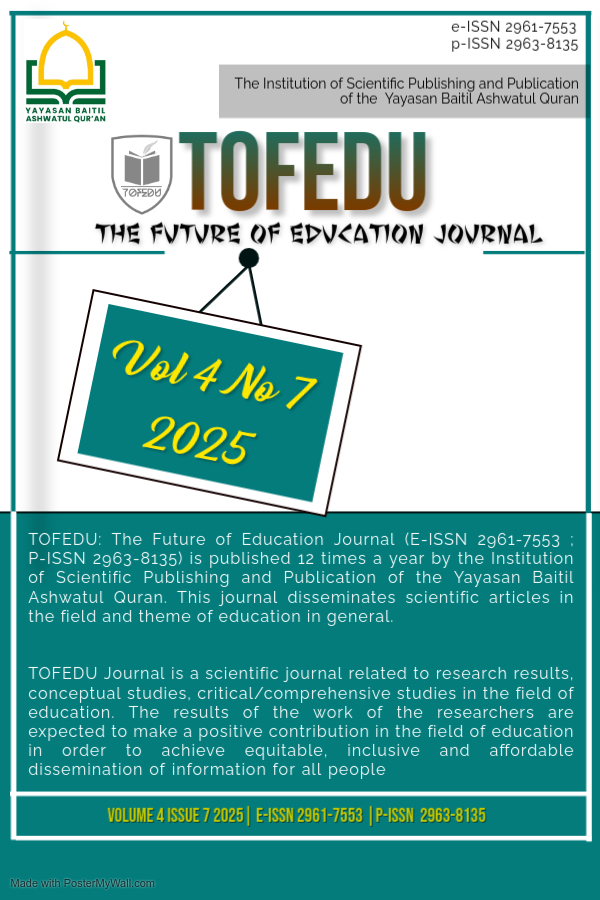The Role of the School Principal in Promoting an Innovation Culture in SD Negeri 002 Ibul Elementary School, Pucuk Rantau District, Kuantan Singingi Regency, Riau
Main Article Content
Abstract
The background of this research reveals that there are still several challenges faced by the principal in fostering a culture of innovation in the school. One of the main challenges is the resistance from some teachers to adopt more active and creative learning methods. In addition, limited time and heavy workloads pose further obstacles for teachers in implementing innovative ideas. Nevertheless, the principal continues to show a strong commitment to improving the quality of learning and school facilities. Therefore, it is important to further investigate the principal's role in overcoming these challenges and in sustainably promoting a culture of innovation at SDN 002 Ibul.This study uses a descriptive qualitative approach, with primary data sources from the principal, vice principal, and teachers, and secondary data from books, journals, articles, and documentation. Data collection techniques include observation, interviews, and documentation. Data analysis is carried out through data reduction, data presentation, and drawing conclusions with verification. The validity of the data was tested using credibility, transferability, dependability, and confirmability. The results show that the principal plays an active role in developing various innovative programs such as the Strengthening Pancasila Student Profile Project (P5), digital media, and project-based learning. Additionally, the principal creates a conducive learning environment by providing multimedia rooms, teaching aids, and encouraging the use of technology in the learning process. From a managerial perspective, innovations are managed through training, monitoring, and regular evaluations. The principal also fosters collaboration among teachers, students, parents, and external parties to ensure the sustainability of innovation. A pleasant working atmosphere is cultivated through discussion spaces and the active involvement of teachers in decision-making processes. Teachers are encouraged to implement creative learning methods such as using videos, educational games, ice-breaking activities, and thematic learning. Evaluations are conducted periodically through meetings and classroom observations, along with continuous teacher capacity development through training. These efforts highlight the strategic role of the principal in nurturing a sustainable culture of innovation within the school environment.
Article Details

This work is licensed under a Creative Commons Attribution 4.0 International License.
